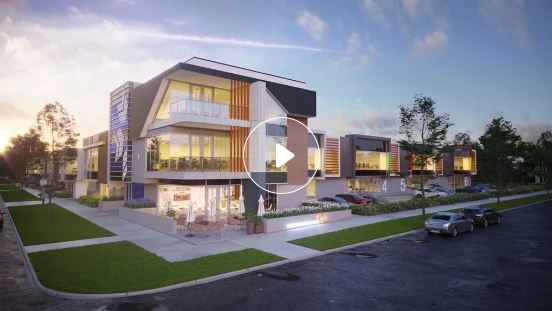Let’s take a quick look at the steps to create a real estate 3D film.
1. Pre-production:
The main purpose of making a real estate 3D film is to advertise the real estate projects. Because scripts will be very diverse, you must have a specific plan before you start. The designers may get scripts from clients but sometimes are fully responsible for the scripts. In any case, it is ready to turn your idea into an engaging story, convey your message accurately and effectively.
After receiving the script, the film crew will edit, design and pass to the 3D department so that everyone can absorb the content of the story. From that, they will find a common voice in the process of making the film. Once the story is completed, designers will embark on a graphical scenario (storyboard) with a series of images showing each scene of the story to help us easily visualize moving images later. Based on the original images, simple animations are created to evoke a general sense of the upcoming movie.
At this phase, all elements including engineering (computer, 3D software), scripts with character systems and sound must be completed carefully and in detail. In particular, efforts to create compelling ideas, vivid visual designs and the research and development of new 3D tools are essential to complete the next stages.
2. In the production:
After finishing the pre-production stage, the film crew enters the production stage. However, unlike TVCs, real estate 3D films are created entirely in the digital world with parts that work as an assembly line in a factory.
Here, 3D artists create models for 2D images that have been previously drawn. From animations, designers will attach skeletal systems to all objects and realistic movements will be included in each character. Along with perfecting the characters, designers will create a spectacular context such as smoke, fire, clouds … to fit the story. During this period, 3D experts focused on lighting processing techniques to make the character images sharp and clear.
And the last important step is the rendering. Accordingly, the image quality, characters of the movie and the work of all teams are assessed through this displayed image.
Thus, with the simplest description, you also understand somewhat the work of filmmakers in general and real estate advertising in particular. This is a smooth combination between the human element and modern 3D technology.
3. Post-production:
Post-production is the period of editing effects, assembling computer graphic images with real images. At this moment, the most common tasks are editing colors and backgrounds and creating cinematic effects for the subject.
This is the final step in the editing process to correct the draft error. At the same time, in this phase, filmmakers will add music, visual effects to increase the perfection. Real estate 3D film should be presented in a way that is as close, vivid and natural as the human environment. Therefore, the influence of all objective factors such as climate, light, traffic to the project … need to be studied carefully. This depends on the sensitivity and experience of service providers.

